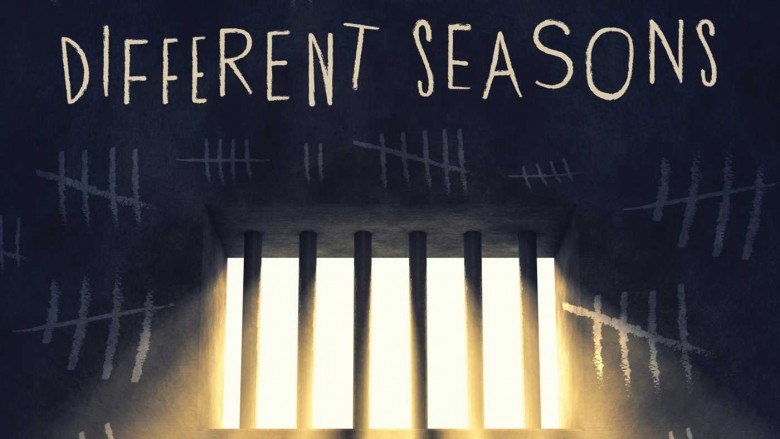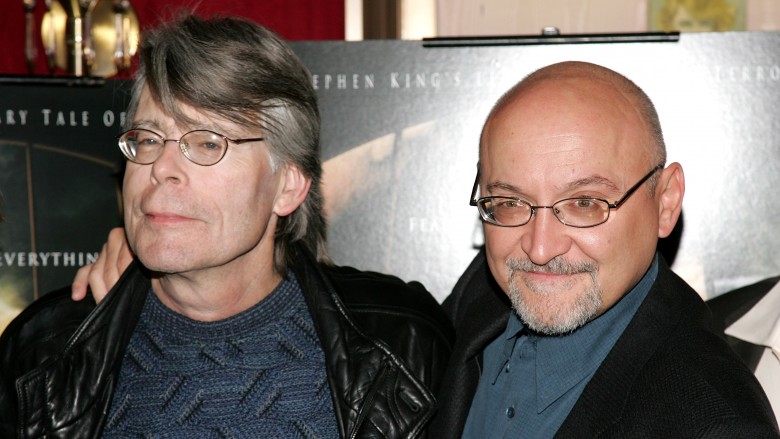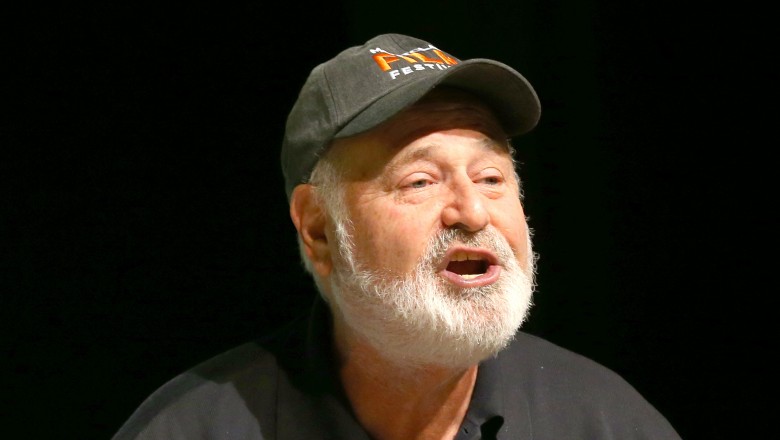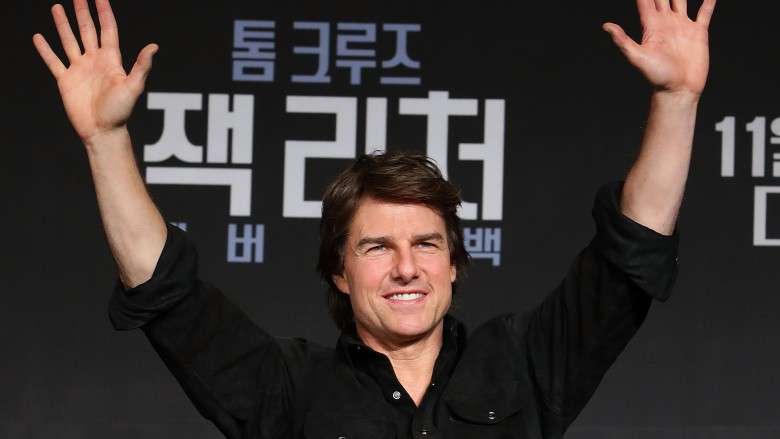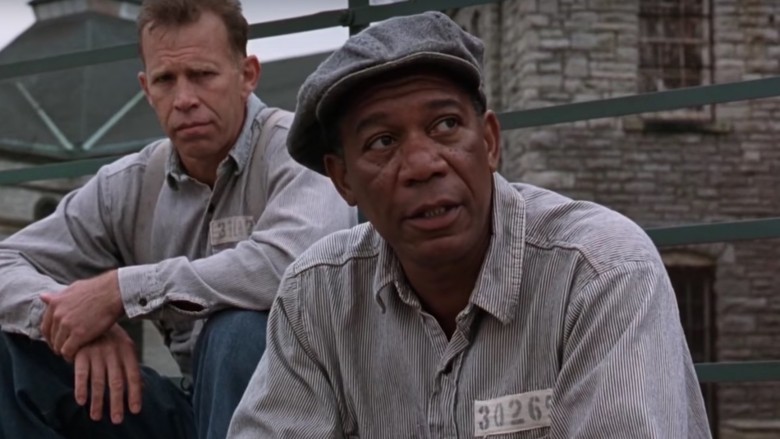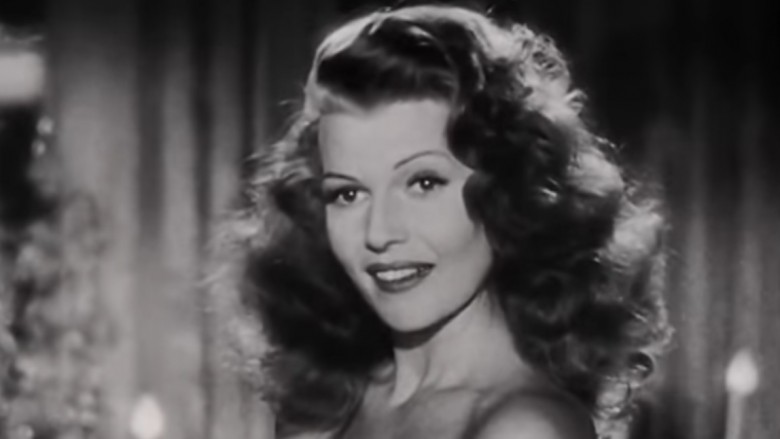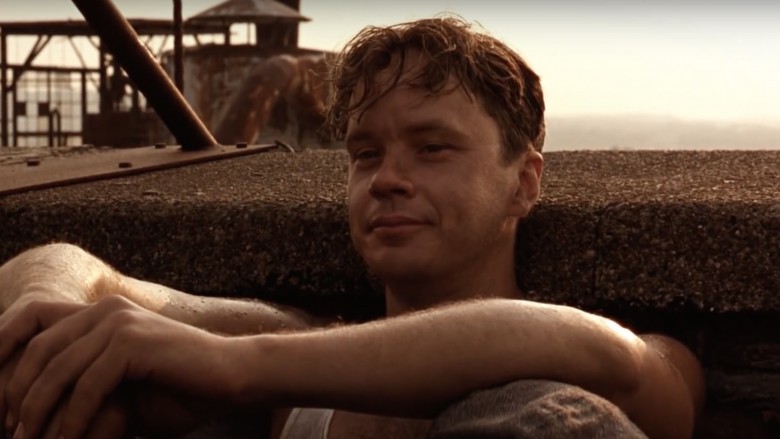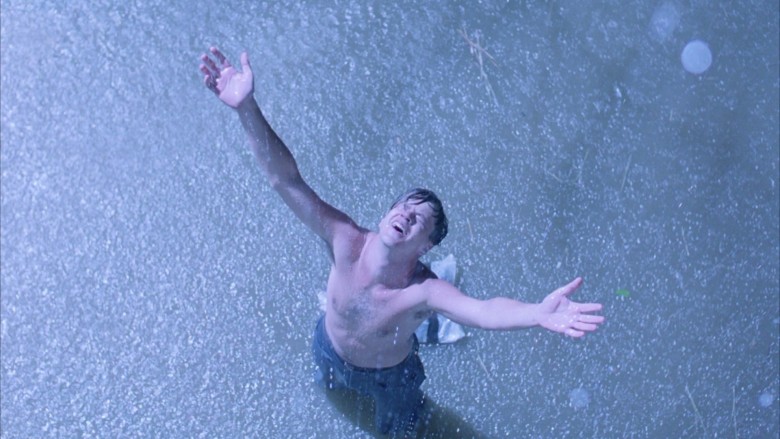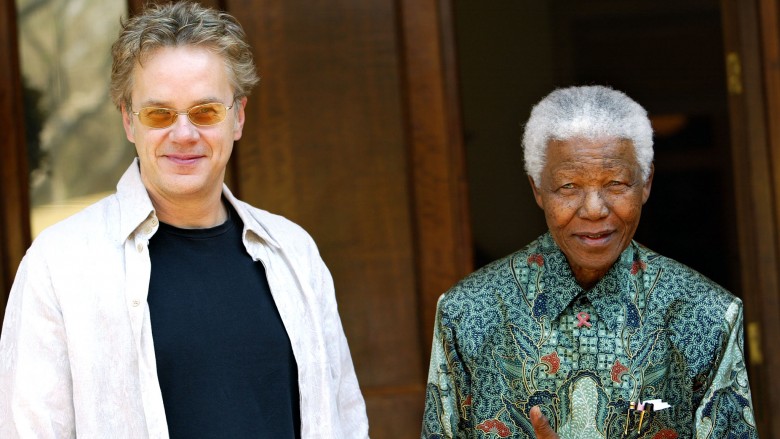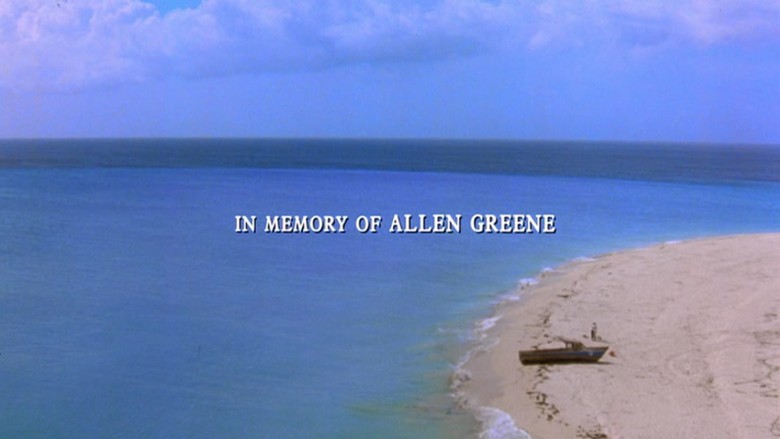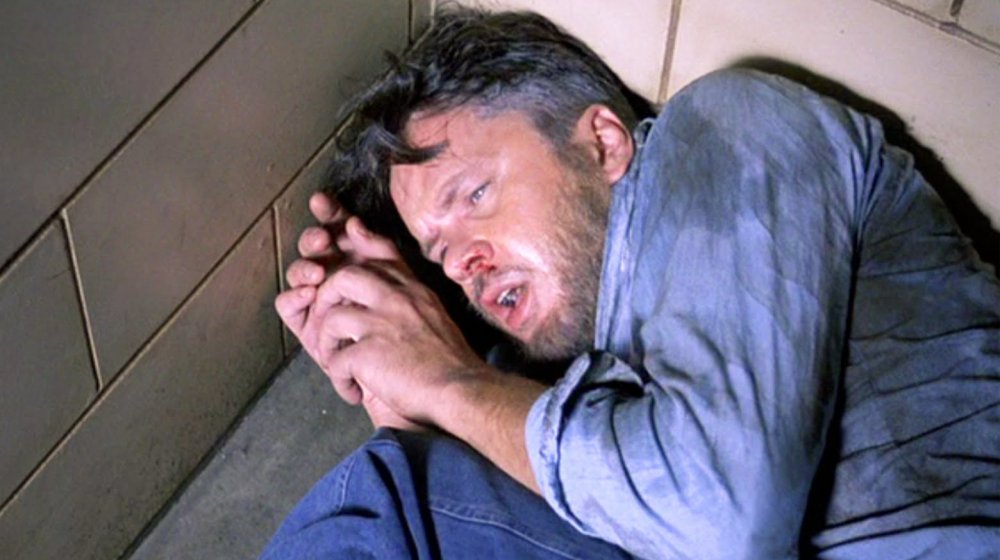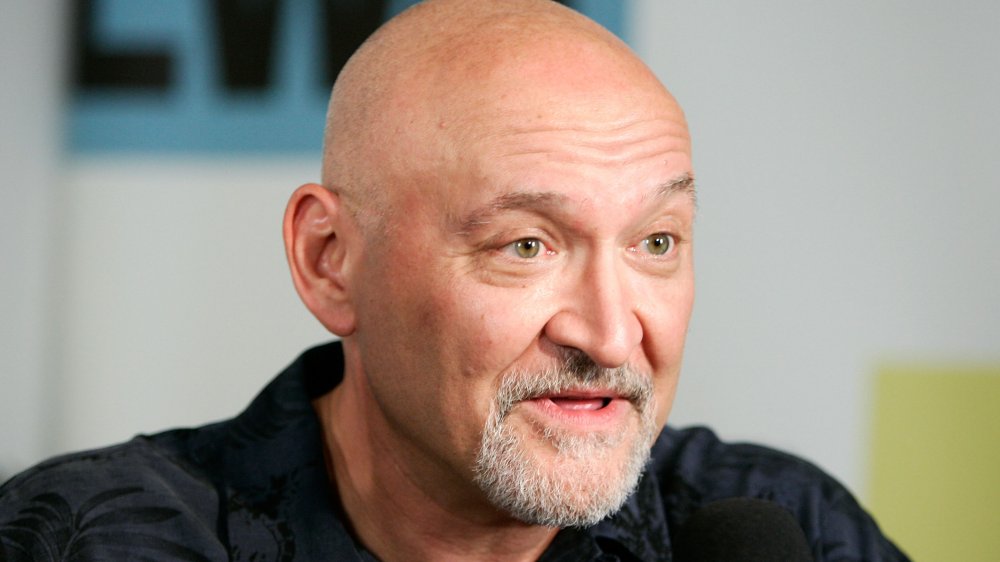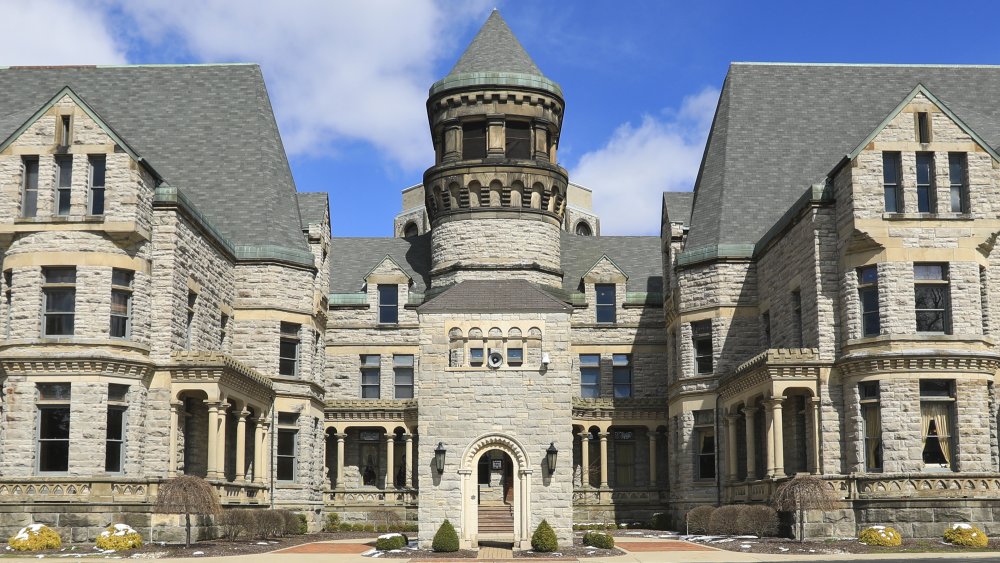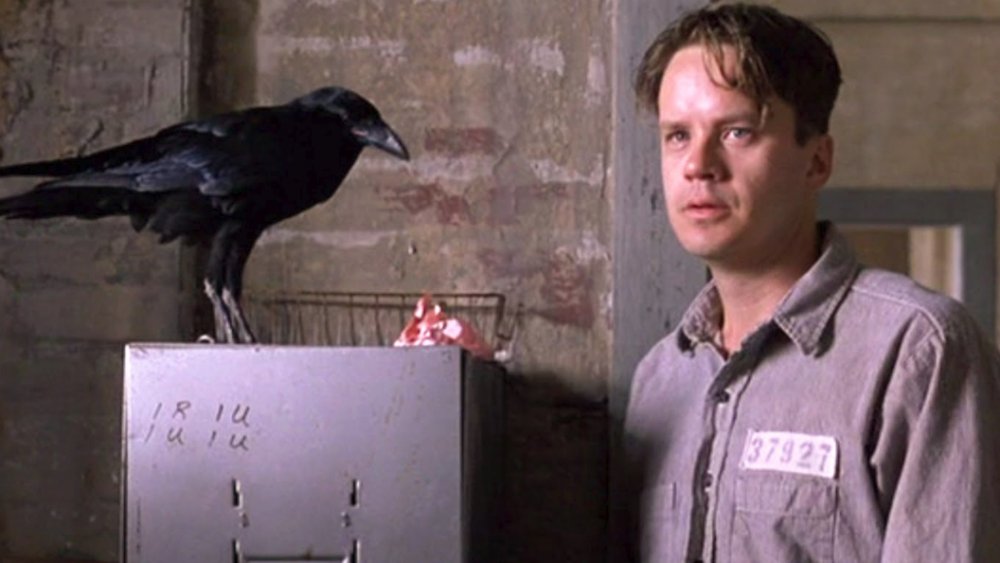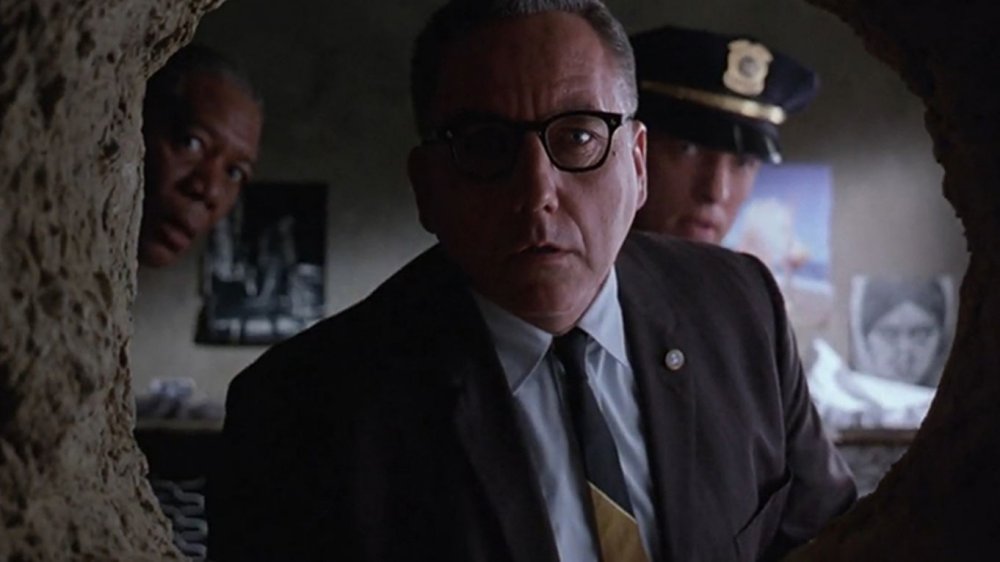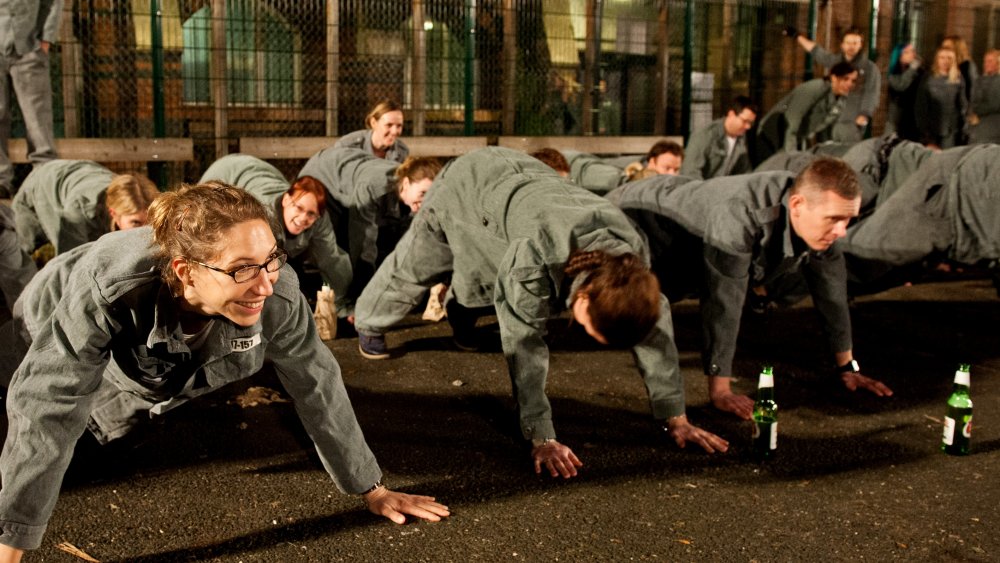The Untold Truth Of The Shawshank Redemption
Following a modestly successful release in 1994, The Shawshank Redemption has gone on to become one of the most beloved and acclaimed movies ever made. It often sits at number one atop IMDb's list of the top 250 movies of all time (as voted on by users), outranking even The Godfather, Schindler's List, and The Dark Knight. With performances for the ages from Tim Robbins as quiet, new inmate Andy Dufresne and Morgan Freeman as wizened lifer Red, it's a simply told, deeply affecting drama set in the imposing Shawshank prison. But at its core, this is a film about the impossibility of caging the human spirit. It's a movie about hope. So get busy livin', or get busy readin' these little known facts about The Shawshank Redemption.
It's based on a Stephen King novella
Dozens of books and stories by Stephen King have been turned into movies and TV miniseries, but The Shawshank Redemption is one of the very few that isn't in the horror genre. It's based on Rita Hayworth and the Shawshank Redemption, one of the four novellas that comprise the 1982 collection Different Seasons. The collection also includes the thriller Apt Pupil, which became a film in 1998, and the coming-of-age drama The Body, which Rob Reiner turned into Stand by Me. In fact, the only section of Different Seasons that hasn't been adapted for the screen is The Breathing Method, a non-horror story that involves a woman giving birth...while decapitated.
Shawshank is also one of the few projects based on a King work whose promotional materials didn't prominently mention that fact. According to Mark Dawidziak's The Shawshank Redemption Revealed, King's name was purposely not plastered across movie posters and billboards advertising the film. "Stephen King" appears in tiny type amongst the credits on the poster, and that's about it. The studio didn't want to mislead audiences into thinking they were going to get the usual King horror movie, like Misery or Pet Sematary.
Frank Darabont has a great relationship with Stephen King
While many filmmakers have put Stephen King's stories onto celluloid, the author hasn't always been a fan of these adaptations. For example, he disliked Stanley Kubrick's 1980 version of The Shining, finding Kubrick's characterization of Wendy (Shelley Duvall) to be misogynistic. Nevertheless, he encourages new filmmakers to adapt his work by offering young directors the rights to his short stories for just one dollar.
In the early 80s, Frank Darabont paid his buck to adapt "The Woman in the Room." He then gained some screenwriter cred by writing films like A Nightmare on Elm Street 3 and 1988's The Blob. Bolstered by his success in the business, Darabont approached King again, only this time asking about Rita Hayworth and the Shawshank Redemption. Evidently, King enjoyed Darabont's take on "The Woman in the Room" so much that he sold the Shawshank rights for a mere $1,000. However, King never even cashed the check. Instead, he had it framed and gave it back to Darabont as a gift.
Rob Reiner almost directed the film
After writing the script for The Shawshank Redemption, Darabont sent the screenplay to Castle Rock Entertainment, the production company run by Rob Reiner (Stand by Me, Misery). Castle Rock producer Liz Glotzer, a self-described fan of prison movies, loved Darabont's adaptation, calling it "the best script she'd ever read." In fact, she threatened to leave the company if Castle Rock didn't move on it. However, Rob Reiner wanted to direct the film, and he offered Darabont $3 million to sell the screenplay. After all, Darabont had only helmed one actual move at this point, a made-for-TV endeavor called Buried Alive. Castle Rock also promised to finance any film of Darabont's choice. However, the young director wouldn't change his mind, taking a lesser sum and the directorial duties that went along with it. And as Shawshank became one of the greatest movies ever made, it seems like the man made the right choice.
Tom Cruise almost played Andy
Though he wouldn't be directing the movie, Rob Reiner did have a hand in the casting, offering the role of Andy to none other than Tom Cruise. The two had worked together in 1992's Oscar-nominated A Few Good Men, with Cruise playing the lead and Reiner calling the shots behind the camera. While the superstar was definitely intrigued by the project, he didn't want to work with such an inexperienced director like Darabont, saying he'd only take the part if Reiner was running the show. After Cruise passed, the role was offered to the likes of Tom Hanks, Kevin Costner, and Nicolas Cage, all of whom said no. Eventually, the part made its way to Tim Robbins, and now, it's pretty much impossible to see anyone else in the movie.
Another huge movie star almost showed up in The Shawshank Redemption, and in a supporting role. Gil Bellows, best known for his work on Ally McBeal, made one of his earliest appearances in Shawshank, as illiterate, sideburns-sporting inmate Tommy. According to Entertainment Weekly, Bellows got the part when the other young actor originally cast — Brad Pitt — had to leave due to a scheduling issue.
The role of Red was written for a white actor
In Stephen King's original novella, the character of Red was an Irish-American guy with, appropriately enough, reddish-gray hair. So when thinking about who to cast in the part, Darabont considered two of his favorite older, white actors: Gene Hackman and Robert Duvall. However, neither actor could accept the part, and that's when Castle Rock producer Liz Glotzer suggested going with Morgan Freeman. Darabont loved the idea, and Freeman signed on, eventually earning an Oscar nomination for Best Actor. And sure, his hair wasn't red, but Darabont got around that by writing a joke to explain the nickname. When Andy asks why people call him Red, Freeman's character responds, "Maybe it's because I'm Irish."
The story behind the name change
When it comes to long titles, The Shawshank Redemption is a bit of a mouthful. Of course, the name could've been a whole lot longer, as King's novella was called Rita Hayworth and the Shawshank Redemption. But why did the first three words get cut out of the title? Well, Darabont didn't change it for linguistic reasons. Instead, he altered the name because he didn't want to mislead casting agents—or actresses—into thinking it was a biopic on '40s movie star Rita Hayworth. (Hayworth's main "role" in the film is as a poster covering up Andy's secret tunnel out of prison.) Early on in the production process, Darabont says he received a bunch of resumes and headshots from actresses interesting in playing the "title role," as well as an agent who represented a supermodel trying to get into acting. "That told us how carefully that agent had read the script," Darabont later said, "and how much hot air floats around Hollywood from time to time."
Nevertheless, when the film hit theaters in Finland, the local distributor released it under a title similar to the source novella — and which revealed a major plot twist. The title? Rita Hayworth: The Key to Escape.
It was a big hit on video
These days, pretty much everyone loves The Shawshank Redemption, but it wasn't a huge box office success when it first came out. The movie earned just $18 million in late 1994, and then another $10 million when it was re-released into movie theaters in early 1995 after landing seven Academy Award nominations. Fortunately for film fans everywhere, the movie finally became a hit on home video. Upon its initial release on VHS, Warner Bros. manufactured and shipped 320,000 copies of The Shawshank Redemption to video stores. That kind of volume, usually reserved for big blockbusters, was a gambit by Warner Bros. to get the movie in front of as many video store shoppers as possible...and it worked. Despite competition like The Lion King and Forrest Gump, The Shawshank Redemption became the most rented video of 1995, eventually grossing about $80 million in rentals.
The reason why it's on TV so much
One of the reasons The Shawshank Redemption is such a classic is because plays on TV a lot. Like a whole lot. So why is Shawshank so popular on the small screen? Well, a year before Castle Rock Entertainment produced The Shawshank Redemption, cable TV tycoon Ted Turner bought the company as part of an effort to provide his channels with programming. When the TV rights for Shawshank became available, Turner took the movie and made it part of TNT's "New Classics" campaign, which is probably why it seems like The Shawshank Redemption is on TNT all the time. In fact, if you look at the numbers, you'll discover that in 2013, Shawshank aired on cable for a jaw-dropping total of 151 hours. So if you turn on your TV right now, there's a good chance you'll see Tim Robbins standing in the rain.
Nelson Mandela was a big fan
Since starring in The Shawshank Redemption, Tim Robbins and Morgan Freeman have both gone on to win Oscars, for Mystic River and Million Dollar Baby, respectively. And both actors have starred in huge hit movies—Robbins in War of the Worlds and Freeman in The Dark Knight trilogy, to name just a few for each. And yet, whenever these actors talk to fans, it seems people only want to chat about Shawshank.
Speaking to Vanity Fair, Freeman explained, "About everywhere you go, people say 'The Shawshank Redemption—greatest movie I ever saw." Robbins has had quite a few similar experiences, saying, "All over the world, wherever I go, there are people who say, 'That movie changed my life.'" The actor also once said that when he met Nelson Mandela—president of South Africa, winner of the Nobel Peace Prize, and real-life prisoner—the great man "talked about loving Shawshank."
The story behind the film's dedication
At the end of The Shawshank Redemption—after Andy and Red reunite, and we're all wiping away tears—there's still one last moving moment. It's a dedication that reads, "In memory of Allen Greene." So who is this guy exactly? Well, on the director commentary track on the Shawshank DVD, director Frank Darabont explaines that Greene was his first-ever agent.
As Darabont explained, in the '80s, he was "a set dresser on low-budget movies who wanted to be a writer, and it's very hard to get an agent to believe in you on that level." But when Darabont met Greene, he discovered a friend and an ally. Sadly, Greene died of complications from AIDS right before Shawshank started filming, and that's why the director decided to pay his friend tribute. "I wanted to acknowledge not just his significance to my career," Darabont said, "but also that he was an incredibly decent, much-loved, and much-missed person in the lives of those who knew him."
Tim Robbins prepped extra hard for the film
There are probably as many ways to prepare for a role as there are actors. Some attempt to get into the heart and soul of their character by sampling some of the experiences they endured. To play wrongfully convicted inmate Andy Dufresne in The Shawshank Redemption, Tim Robbins went that route, and had himself extremely imprisoned for a spell. "I spent some time in solitary, to prepare for Shawshank," he told CBS Sunday Morning. "I asked to be locked up. It gives you a good idea of what the isolation is, and what the loneliness of it is." According to Entertainment Weekly, he also met with inmates in their cells at a prison near the film's shooting site and voluntarily had his limbs shackled for hours. Robbins' co-star, Morgan Freeman, didn't go for all that. "Acting the part of someone who's incarcerated," he observed, "doesn't require any specific knowledge of incarceration."
Director Frank Darabnont had a few disagreements
When shooting began on The Shawshank Redemption, director Frank Darabont had previously helmed just one full-length film: the 1990 made-for-TV horror movie Buried Alive. And there he suddenly was, with his creative vision, trying to lead a massive film production and trying to give orders to people with much more experience than his own — like director of photography, with whom he frequently butted heads. While Darabont wanted lots of grand, sweeping shots of the massive prison's exterior, Deakins disagreed. "It's nice not to see outside the prison," Deakins argued in Entertainment Weekly. "It adds claustrophobia, so when we go wide, it's a much bigger statement."
Darabont also clashed with star Morgan Freeman. They had different ideas about the scene during which Andy and Red find each other in Mexico. "Frank thought I should be blowing that harmonica that Andy gave me. And I refused," Freeman told the New York Daily News, because he thought it was "sort of asinine, sort of cliched, sort of unnecessary." Freeman also refused when Darabont would ask for what the actor considered to be too many extra takes. "The answer was no," Freeman told Vanity Fair. "Acting itself isn't difficult. But having to do something again and again for no discernible reason tends to be a bit debilitating to the energy."
For your next vacation, how about Shawshank?
The Shawshank Redemption was shot largely on location, with the imposing, decommissioned Ohio State Reformatory in Mansfield, Ohio, serving as the cinematic prison. It's unlikely that a century-old, disused prison would become the centerpiece of a tourism industry, but that's what's happened, according to NPR. Tours are available inside the prison itself, including stops in the library, the showers, the solitary confinement cell, and the sewer pipe Andy (Tim Robbins) crawls through (which was built for the film, but was left standing after production ended). In 2008, the Mansfield Visitors Bureau put together "The Shawshank Trail" to help travelers, or "Shawshank Pilgrims," find their way to filming sites around town, such as the huge oak tree where an aged Red (Morgan Freeman) contemplates life as a free man.
Local businesses that had nothing to do with the movie get in on the action, too. Cafe on Main sold a Shawshankwich, Eatmor Bundt Co. sells cakes shaped like the prison, and the Squirrels Den candy shop displays scenes from the movie re-created in chocolate.
No maggots were harmed in the making of this film
There aren't a lot of animals in The Shawshank Redemption. Along with some rats, there's Jake, the pet crow of prison librarian Brooks, who steals the handful of scenes in which he appears (especially the first one, when Brooks introduces Andy Dufresne to the bird, which he's hiding in his jacket). Andy finds a maggot in his jailhouse grub and offers it to Jake, who happily eats it. The Shawshank Redemption received the coveted "No animals were harmed during the making of this film" credit, a seal of critter-friendly approval from the American Humane Association. It even oversees how bugs are treated. Had Tim Robbins, in his role as Andy, fed a live maggot to Jake the bird, the AHA wouldn't have signed off on the film. The prop department worked out a solution: The maggot was fake, constructed out of baby food.
Just how far was Andy's crawl?
The climactic moment in The Shawshank Redemption comes when Andy Dufresne escapes prison with the aid of a tunnel out of his cell, which he secretly dug, little by little, over the course of many years, his progress hidden by a pin-up poster. So how long was that tunnel, anyway? In 2010, the author of a blog called "Yamaloka" figured it out. Assuming that Andy starts chipping away in 1950, and continues to do so every day for more than 15 years, that makes for 5,500 digit days. He disposes of the displaced dust in the yard, and it's never much, which the blogger estimates at about 200 daily grams. All told, that's 1.1 million grams. Based on the shot of the warden examining the tunnel, it seems to be about two feet, or 0.6 meters wide. Using a few geometric and physics formulas, that all works out to a tunnel of 4.32 meters, or 14 feet.
Get busy livin'...live!
First it was a book, then it was a movie, and eventually, The Shawshank Redemption became a play, too. U.K. comedians Owen O'Neill and Dave Johns took a stab at serious dramatic work in 2009, adapting the original Stephen King novella for the stage, sidestepping the movie version completely. As such, it sometimes doesn't line up with the film — sequences invented for the movie didn't make it to the stage version, and in the limited world of the theater, there are no scenes set outside of the prison. (However, Andy's brutal assault in the showers made the jump.)
The play made its world premiere at the Gaiety Theatre in Dublin, Ireland, in 2009, before heading to London's West End (the Broadway of England) for a short run later that year. Reg. E Cathey, best known for his work on The Wire, House of Cards, and the prison show Oz, played Red. Unfortunately, critics didn't much enjoy this version of Shawshank. "Lacking the movie's excursions into the outside world and any sense of moral equivocation, the play, in the end, is The Shawshank Reduction," said The Guardian's Michael Billington.

